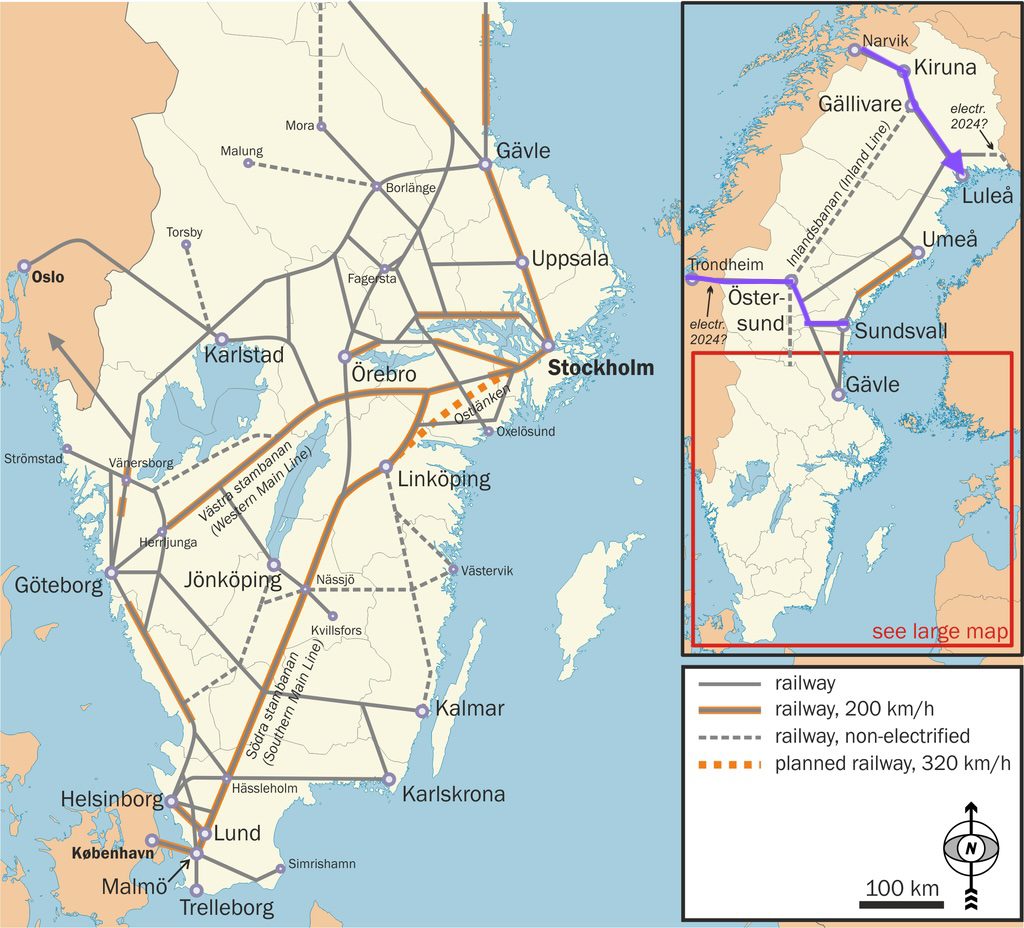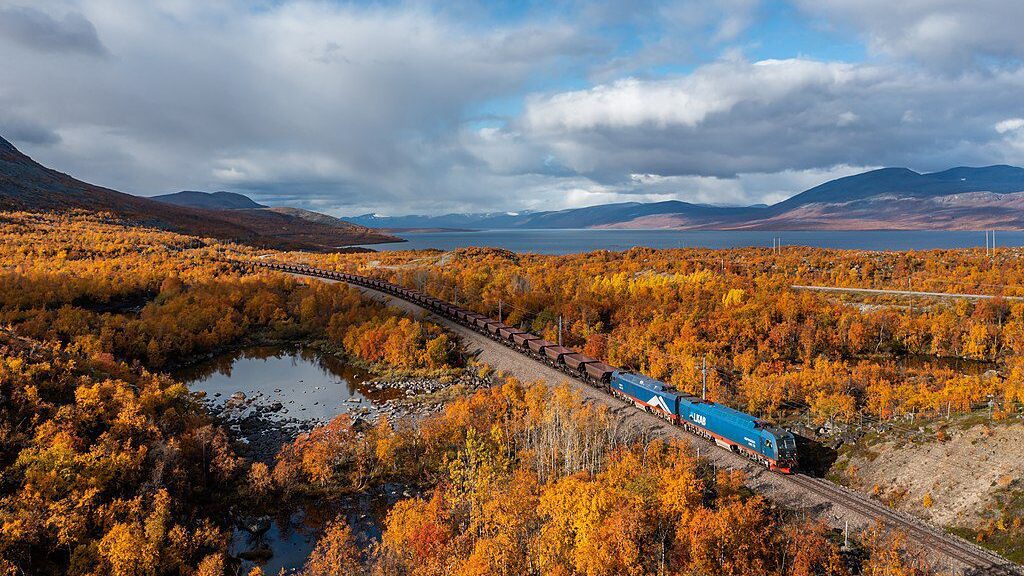Upgrading Sweden’s infrastructure to meet the demands of NATO won’t come cheap, a study from the Stockholm Chamber of Commerce shows. Between road and railroad improvements, including electrifying the 1,300 km Inlandsbanan railroad, the country is looking at a price tag of approximately €9.7Bn.

Six transportation routes have been identified as crucial to the country’s integration into NATO’s defense planning, largely east-westly connections between Sweden and Norway. The railroad from Stockholm to Oslo needs improvement, as do two northern railroads connecting ports on the Baltic with ports on the Norwegian Sea. The north-south-going Inlandsbanan—a railroad that’s been mothballed since 1992, only running passenger trains on shorter sections during part of the year, mostly for tourists—needs electrification. Several highways also need to be brought up to requirements. In addition, infrastructure minister Andreas Carlson told the daily SvD, the construction of additional roads, purely for military purposes, is a possibility.
“Our estimates show that this involves investments in the order of SEK 111 billion kronor [€9.7 billion],” Carl Bergkvist, chief economist of the Stockholm Chamber of Commerce, told TV4, emphasizing the positive impact the investment would have on the country’s job creation and economy.
Where the money is going to come from is still an open question. The government’s upcoming infrastructure plan, budgeted at SEK 1,200 billion [€105.5 million], has no room for these projects.
The projects are ones that should have been started already, some claim, and will benefit Sweden as a whole, once finished.
“It would be a win-win for society to proceed with many of the NATO investments that are now required. It’s about everything from shorter journey times to lower emissions and higher road safety,” Bergkvist said.






